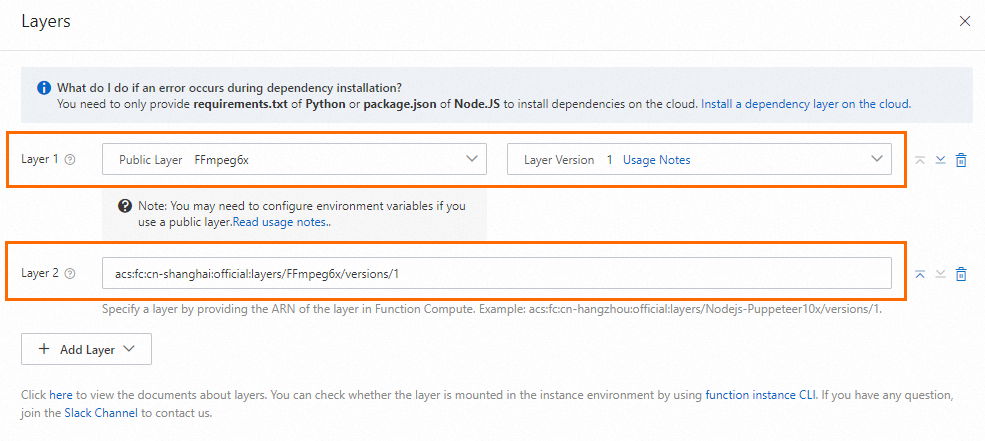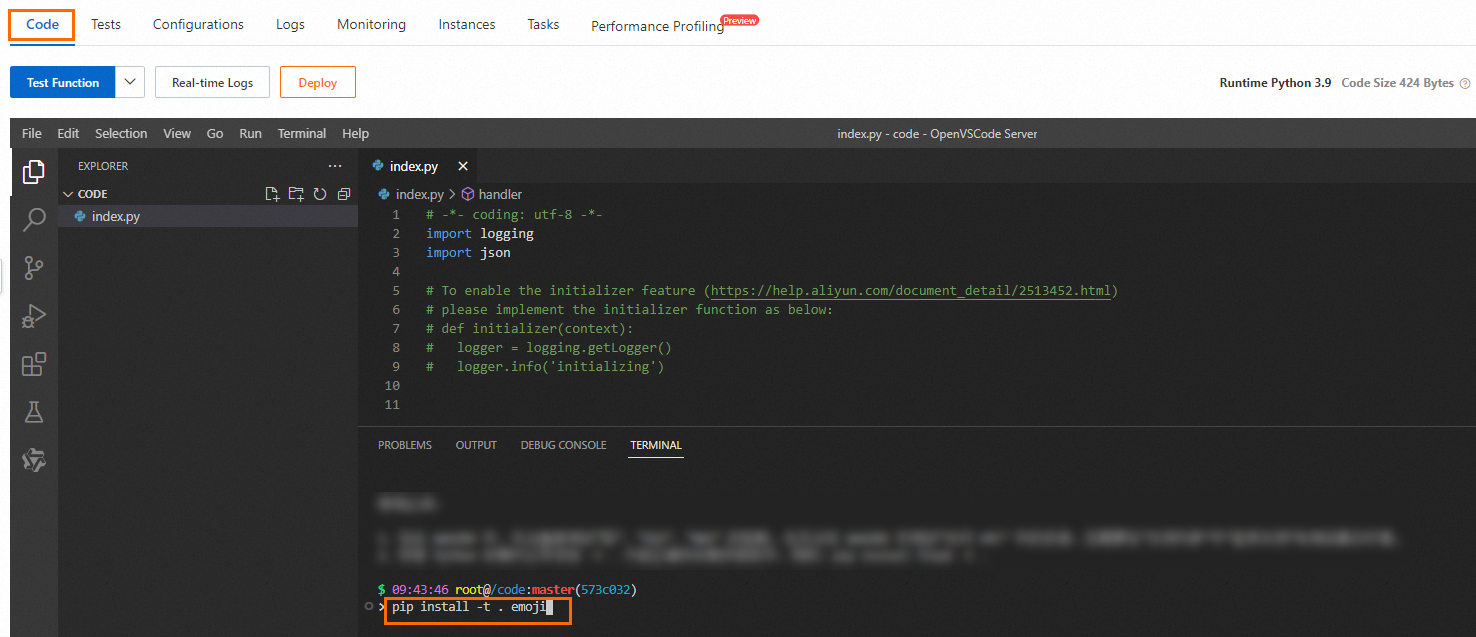Common dependencies are built in runtimes of Function Compute for you to reference in functions. If these built-in dependencies cannot meet your business requirements, you can install your own third-party dependencies. This topic describes how to install third-party dependencies for a function.
Background
For more information about common built-in dependencies in Function Compute runtimes, see the following topics:
Install a dependency by using a layer
The official public layers of Function Compute are pre-installed with common dependency libraries and can be directly used. You can also build a custom layer to install required dependencies. If you want to get more public layers, see awesome-layers.
Use public layers to install dependencies
Official public layers
Log on to the Function Compute console, create a function or find the desired function, choose , and click Modify. In the Layers panel, choose . For more information, see Configure a public layer.
Non-official public layers
Find the desired layer from awesome-layers and obtain the Alibaba Cloud Resource Name (ARN) of the layer. On the function details page, choose and click Modify. In the Layers panel, choose .

Install dependencies by building a custom layer
Build a layer in the Function Compute console
Log on to the Function Compute console. In the left-side navigation pane, choose . For more information, see Create a custom layer.
NoteThis method does not support dependencies that contain system dynamic-link libraries with the .so extension. Example: Puppeteer dependency library for Node.js. If the dependency contains a dynamic link library (.so), we recommend that you use a Dockerfile to build the layer.
Build a layer on an on-premises machine
You can build a custom layer on an on-premises machine. For more information, see Build a .zip file for a layer. To use this method, you need to ensure that the on-premises operating system and processor architecture are completely consistent with the Function Compute runtime. Specifically, use an x86-64 Linux operating system, or make sure that the installed dependency library does not depend on the underlying environment or processor architecture. Otherwise, we recommend that you build layers in the Function Compute console or use a Dockerfile to build layers.
For example, the numpy library for Python depends on its underlying environment. If your on-premises machine runs a macOS with M1 chips, you cannot install dependencies on the on-premises machine.
Use a Dockerfile to build a layer
If dependencies contain the underlying dynamic-link libraries or fail to be installed on your on-premises machine, you can use a Dockerfile to install the dependencies. For more information, see Use a Dockerfile to build a layer.
Install dependencies in the Function Compute console
Package the dependencies and upload them to the Function Compute console.
Compress a third-party dependency and its code files into a .zip file.
ImportantYou must compress all files in the code directory into the .zip file. The handler file of a function must be in the root directory of the .zip file.
The packaging method varies based on the OS of your on-premises machine. You can use a packaging method based on your business requirements.
Log on to the Function Compute console and upload a code package by using one of the following methods to deploy the function: Upload ZIP, Upload Folder or OSS.
Install a dependency by using a web IDE terminal
Log on to the Function Compute console and find the function that you want to manage.
On the function details page, click the Code tab. On the WebIDE page, click . In the terminal window, run the
pip install -t . <PackageName>command to install dependencies.
Use Serverless Devs to install dependencies
Create and deploy a function by using Serverless Devs provided by Function Compute. For more information, see Common commands of Serverless Devs.